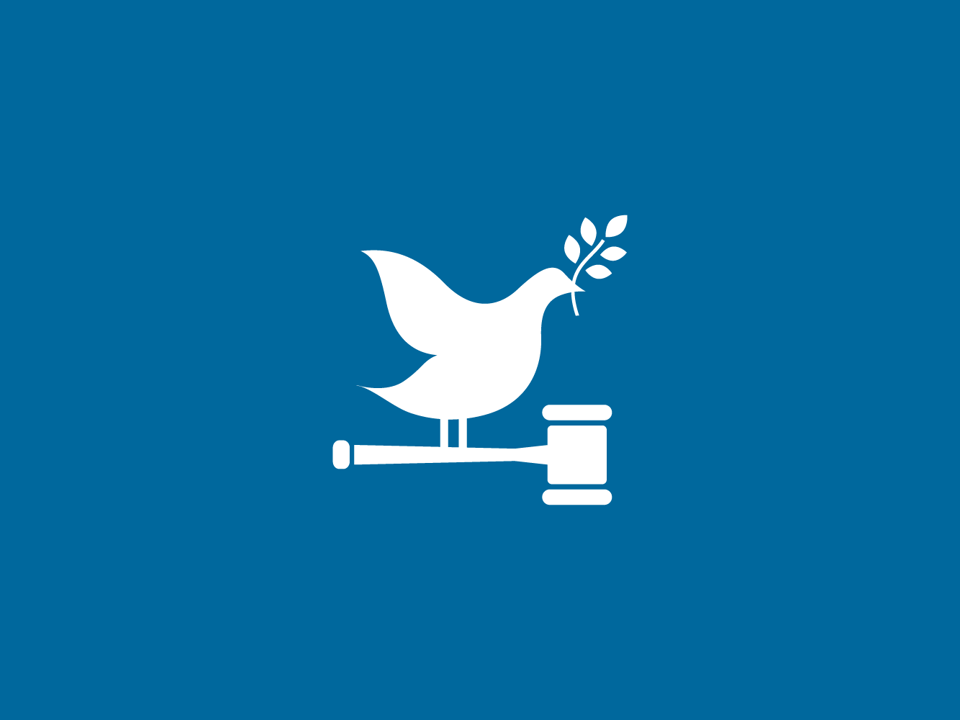Sustainable development goal 16

Peace, justice and strong institutions
Goal 16 is about promoting peaceful and inclusive societies for sustainable development. Access to justice for all and building effective, accountable and inclusive institutions at all levels. The role of the occupational safety and health profession is to help build work environments that are free of violence and harassment. And, at a broader level, institutions that are transparent about their social impacts.
Good occupational safety and health management can contribute to two of the 12 targets linked to this goal:
- 16.3 – promote the rule of law at the national and international levels and ensure equal access to justice for all
- 16.6 – develop effective, accountable and transparent institutions at all levels.
How IOSH supports this goal
- 3d strengthen the capacity of all countries, in particular developing countries, for early warning, risk reduction and management of national and global health risks
- 6.3 improve water quality by reducing pollution, eliminating dumping and minimizing release of hazardous chemicals and materials
- 9.2 promote inclusive and sustainable industrialization
- 9.4 upgrade infrastructure and retrofit industries to make them sustainable, with increased resource-use efficiency and greater adoption of clean and environmentally sound technologies and industrial processes
- 11.5 significantly reduce the number of deaths and the number of people affected and substantially decrease the direct economic losses
- 12.4 achieve the environmentally sound management of chemicals…and significantly reduce their release to air, water and soil to minimise their adverse impacts on human health
- 16.3 promote the rule of law at the national and international levels and ensure equal access to justice for all
The practice of risk management is built upon principles of anticipation, prevention, and improvement. While the immediate objective of occupational safety and health risk management is primarily to prevent injury and ill health among workers, the broader OSH benefit is the ongoing protection of communities and the environment. - 1.3 implement nationally appropriate social protection systems and measures for all
- 8.2 achieve higher levels of economic productivity through diversification, technological upgrading, and innovation
- 16.6 effective, accountable, and transparent institutions at all levels
- 17.10 promote a universal, rules-based, open, non‑discriminatory, and equitable multilateral trading system.
Risk management
The role of OSH professionals is to ensure the use of safe equipment and safe behaviour, and to oversee safe systems of work. But how do we define safety?
It will be different in a shop and in a nuclear power station, and different in a transport yard and a laboratory. The answer can be found by identifying what people are doing, and how they might be exposed to harm; in other words, by conducting a risk assessment and then managing the risks. Regardless of the variation in what safe looks like, the process of managing the risks facing workers is a key contributor to sustainable work.
Effective risk management contributes to the delivery of the following SDG targets:
As the world of work and business changes, new risks to workers will also emerge. Tackling these emergent risks with adaptable risk management will help build resilient, sustainable businesses.
The importance of risk management as part of good occupational safety and health provision is recognised by its inclusion in IOSH’s competency framework.
We've used an ellipsis to show where we've cut down sentences to focus on the safety and health content.
Performance management and governance
Governance is the system by which an organisation is directed and controlled. OSH governance is a facet of the organisation’s wider governance arrangements. It builds a socially sustainable structure in an organisation – one that helps ensure the long-term safety, health, and wellbeing of workers.
OSH performance measurement plays a key role in showing how systems are working in practice to inform governance. Performance evaluation involves analysing and evaluating the data from monitoring and measurement, and deciding whether any OSH activity is achieving the desired effect. Data from monitoring can be used to identify problems, inform improvements, and to make people accountable. If OSH performance management and governance are carried out with the aim of continuous learning and improvement, they help build transparency and integrity in businesses practice.
Performance management and governance contribute to the delivery of the following SDG targets:
Transparency and accountability are cornerstones of sustainable business development. So too are the values of disclosure, learning, and improvement. In order for meaningful progress towards the SDGs to take place, the importance of realistic performance measurement and reporting cannot be overstated. Businesses will play a part in this by faithfully disclosing information concerning the impacts their activities have on people and the planet. Information relating to the treatment of workers – both intentional and unintentional – will contribute to this.
For more information on OSH performance management and governance, search for the following guides on our website: Introduction to performance management and Introduction to OSH governance.
The importance of performance management and governance as part of good occupational safety and health provision is recognised by its inclusion in IOSH’s competency framework.
 IOSH
IOSH